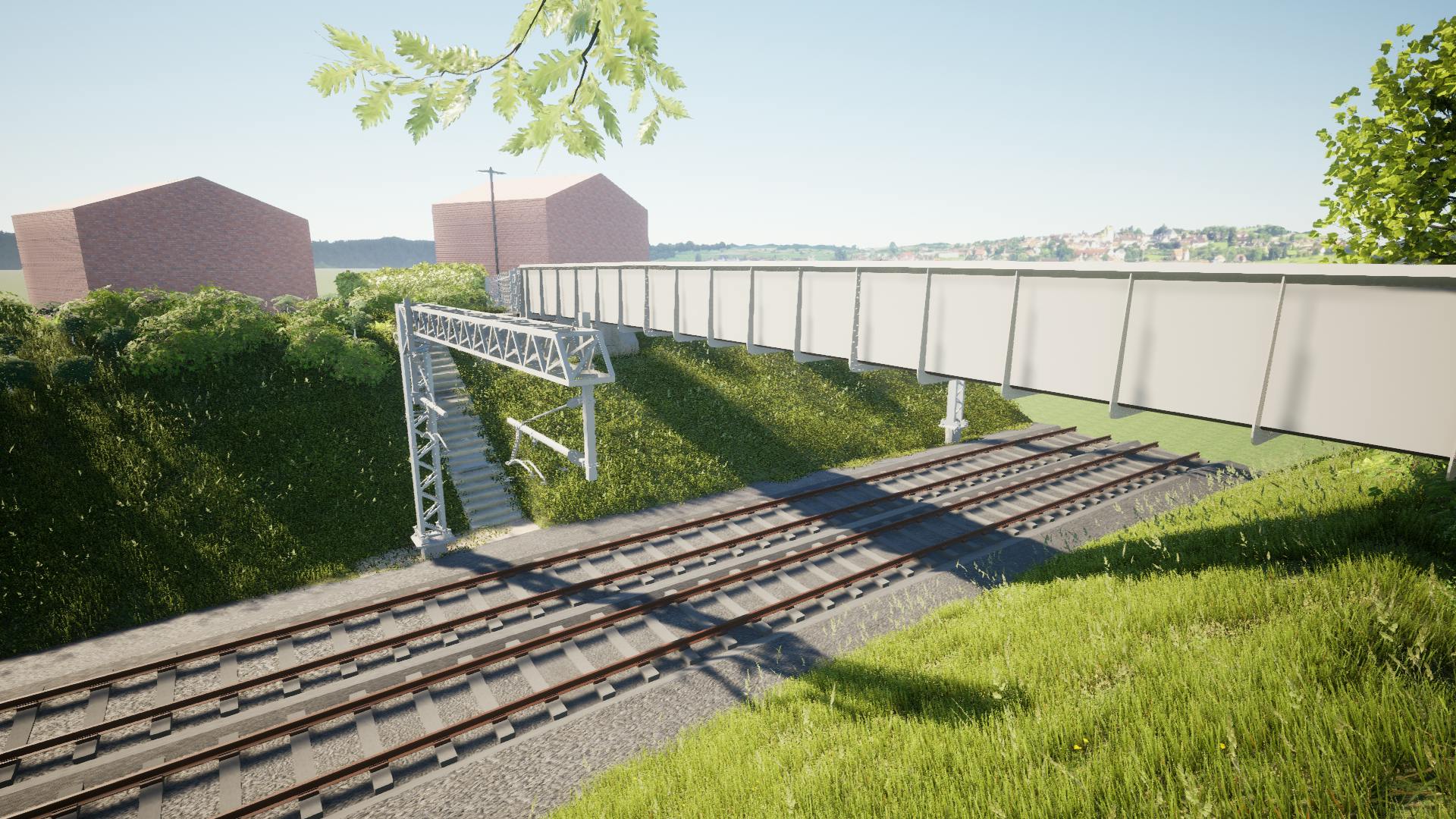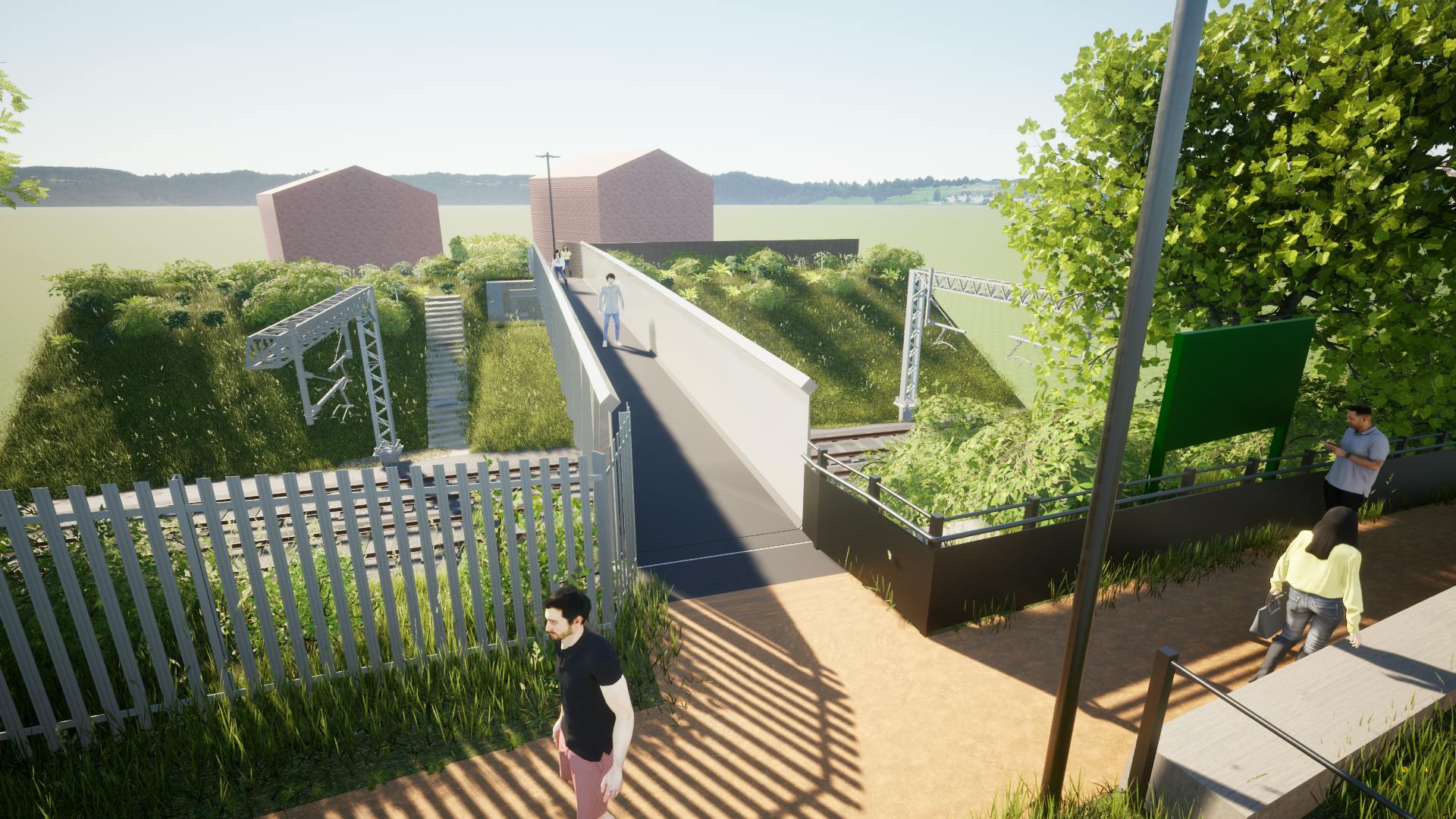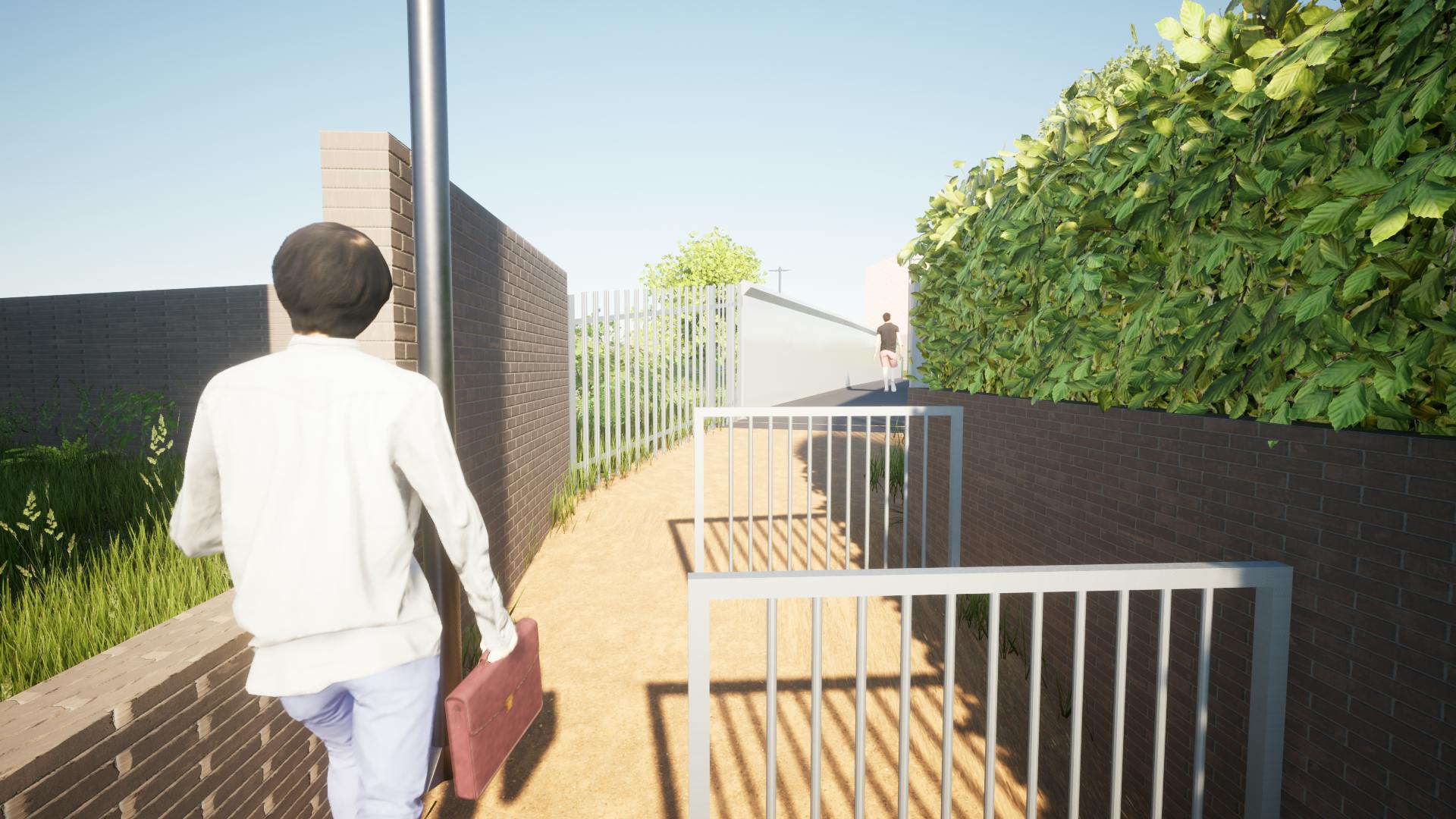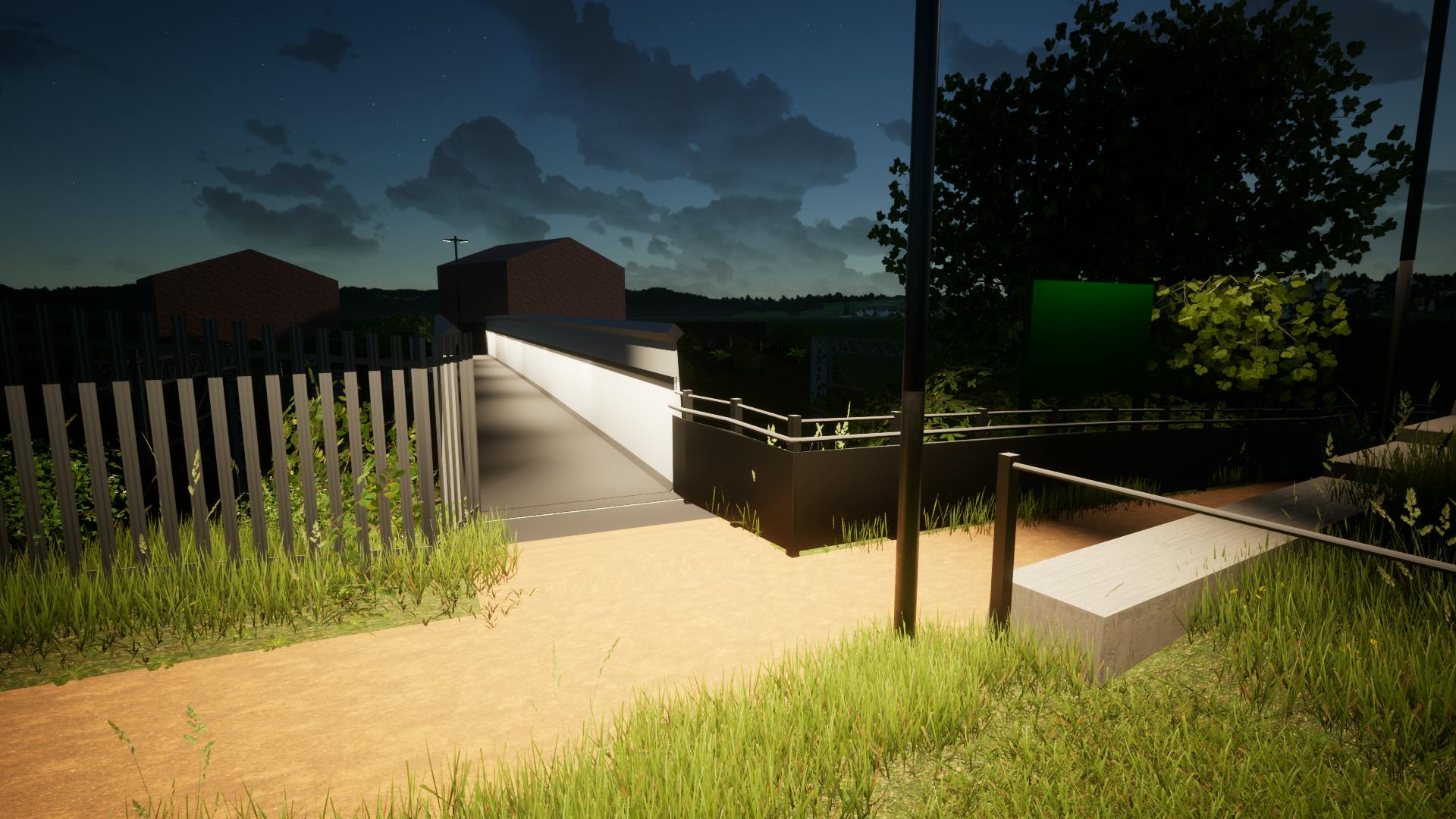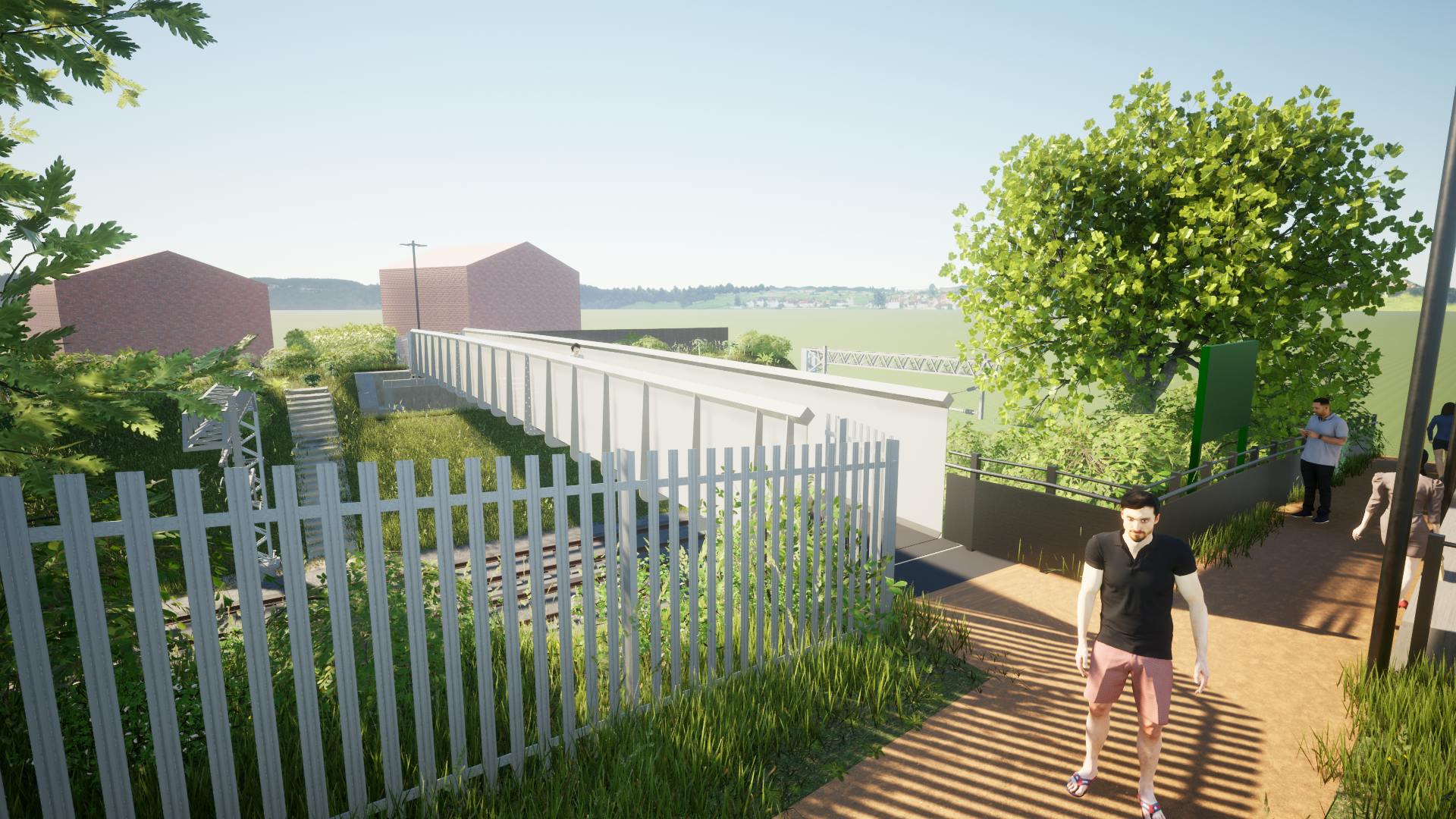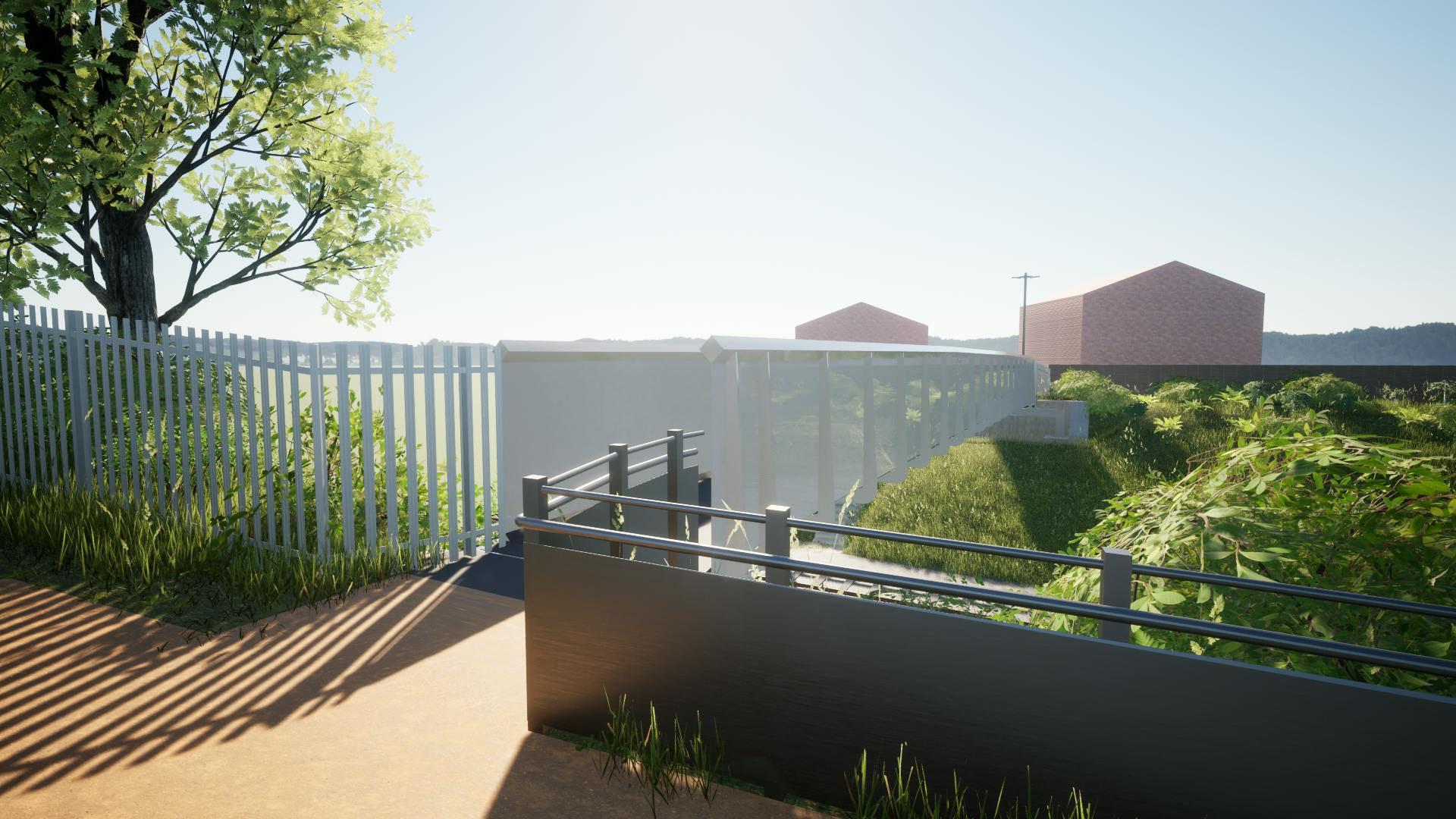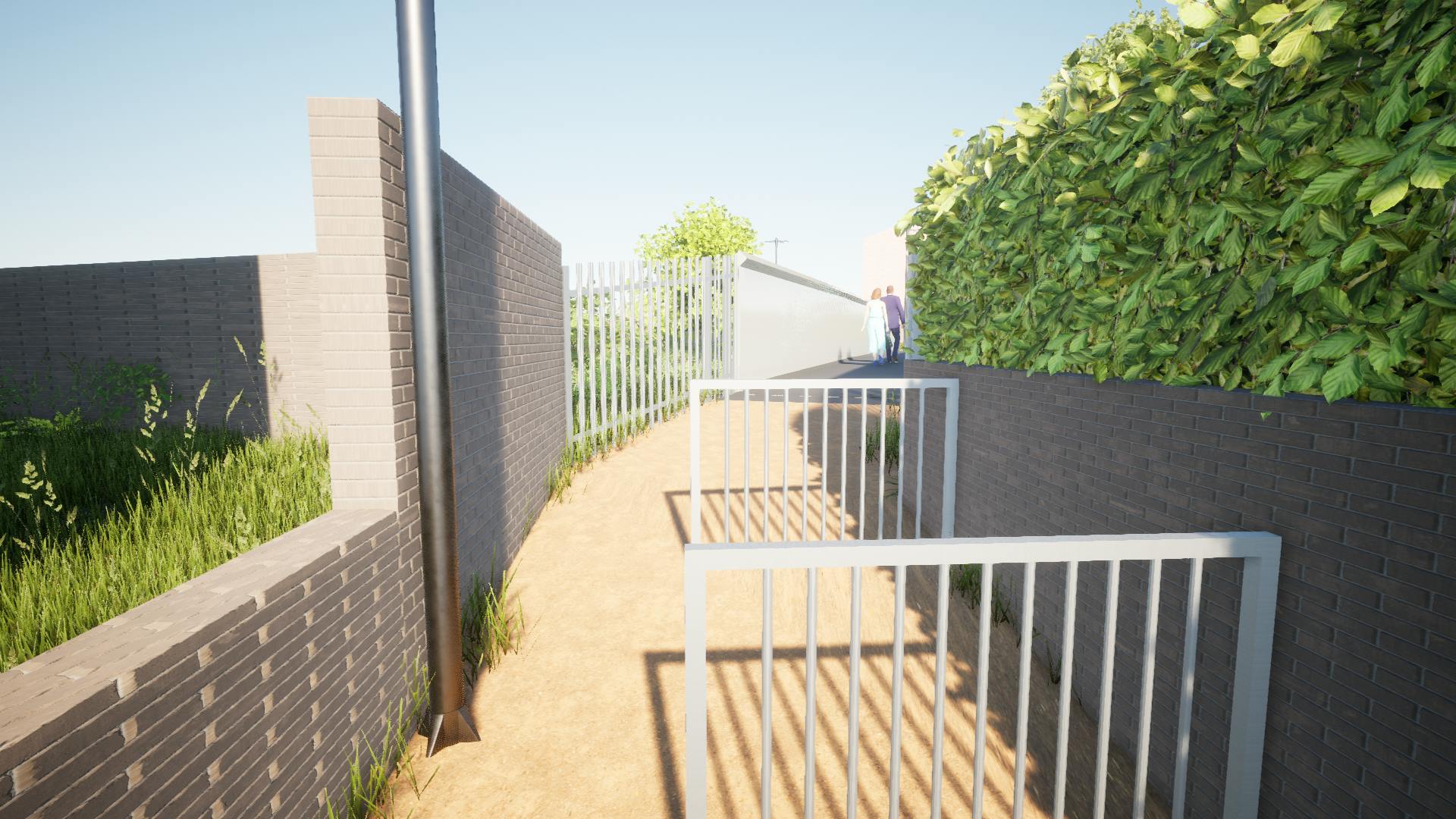Lanks Hill footbridge replacement

In January 2023, Transport for Wales removed a footbridge in Danescourt, Cardiff, as part of the South Wales Metro programme to enable the electrification of the City railway line.
The bridge will be replaced in August 2023 with a new structure.
Background
Transport for Wales is currently in the process of electrifying the Core Valleys Line network. This work will enable brand-new fully electric Tram Trains to run on the City Railway Line from Radyr to Cardiff Central, increasing the capacity of the network and allowing for quieter, more reliable and environmentally friendly services on the network.
To enable electrification, TfW and its delivery partners are currently installing Overhead Line Equipment (OLE) across the network. This consists of steel masts, known as the Main Part Steel, with Small Part Steel structures connected to the mast which will carry the overhead electric wires. The wires supply electricity to the Tram Trains via a pantograph at the top of the train.
Following an inspection of the original bridge just North of Danescourt station, known locally as the ‘Black Bridge’ or ‘Lanks Hill’ in late 2021, it was identified that there was insufficient clearance for the Overhead Line Equipment (OLE) that will power the new Tram Trains.
The original bridge had a clearance of 4320mm from the track level to the soffit of the structure. This does not meet the ‘normal’ clearance required of 4780mm, or the ‘reduced/ special clearance’ that is accepted in areas where full clearance is not possible, of 4500-4600mm.

The original bridge at the site, known locally as the ‘Black Bridge’ or ‘Lanks Hill’ bridge.
As the bridge was determined to be too low for the OLE wires to run under, an option selection activity was undertaken to identify how we could safely install OLE at this location.
The following options to allow us to safely install OLE were investigated:
- Lowering the track
- Raising the height of the bridge
- Removing the bridge
- Removing and replacing the bridge with a new structure
Following the option selection, the option of removing and replacing the bridge was chosen in Summer 2022. The bridge would be removed, leaving the original bridge bearings and associated foundations. The new bridge is planned to be a steel structure spanning the existing track and landing at the existing bridge abutment and foundations.
Installation of the replacement bridge
Following the option selection process, our project team began to design a new structure that meets the Network Rail requirements and can be fitted onto the existing bridge abutments and foundations. The new bridge is planned to be installed during an 8-hour City Line closure starting on the 25th of August and finishing on the 28th of August 2023.
Before this, the overhead wires and equipment will be removed to allow the new bridge to be installed, and they will be reinstated following the completion of the work.
The new bridge will be installed by rail-crane that will be situated in the proximity of the bridge at track level. It will be delivered to the site by rail in 2 to 3 sections. Due to space restrictions at the site, the design needed to be able to be constructed elsewhere and put together on-site, limiting the impact on rail services through Danescourt, and minimising the need for longer-term rail closures and disruption to lineside neighbours.
A small compound site on Beale Close will be reinstated, as was used previously for the demolition work, to allow for the construction work to take place. On-site parking will be monitored by the site manager during this time.
Designing footbridges over electrified lines
The electrification of the railway line brings significant changes to the traditional railway infrastructure across the valley lines in South-East Wales. As we are utilising an overhead wire electrification system, there must be sufficient clearance for the OLE wires themselves and the pantograph on top of the trains when passing under bridges.
The wires carry 25,000v and are extremely dangerous, even if the public does not come into direct contact with the equipment. More information on overhead wires can be found here No second chances | Transport for Wales (tfw.wales)
Bridge parapets
Following a Network Rail instruction in 2020, all new bridges now need to meet parapet height requirements to reduce the risk of suicide, trespass, electrocution, vandalism, and cable theft on the railway.
The Network Rail standards state that the height of new/renewed parapets should be a minimum of 1800m (6ft) for bridges where there is a high risk of trespass, vandalism or suicide and 1500m for other bridges such as motorway bridges and bridges that are not over the railway.
New or renewed parapets must have an inner face which is smooth, non-perforated over their full height, and without hand or footholds.
Footbridges over electrified railway lines
For existing bridges over lines that are to be electrified, the Network Rail standards require that parapets on the bridge must be imperforate, climb-resistant, and at least 1.8m high. They also must have an anti-climb coping on top, for example, the top of the parapet should be pointed.
 Overhead Line Equipment (OLE) through Radyr station.
Overhead Line Equipment (OLE) through Radyr station.
The dangers of Overhead Line Equipment (OLE)
OLE always carries 25,000 volts. That’s the equivalent of 100 times your household electricity. Contact with OLE is fatal 9 out of 10 times, with survivors suffering life-changing injuries. Even if you don’t touch the lines, electricity can still jump. Coming within 2.75m of an electrified line is close enough to kill.
To protect the public, we need to put additional safety measures on our infrastructure. This includes raising the height on the parapets of bridges, and installing improved fencing across the network, as well as barriers between public spaces and the OLE where required.
OLE will be “switched on” in phases throughout South Wales, starting in June 2023.

TfW's No Second Chances safety campaign to raise awareness of the dangers of trespassing on the railway line. More information on this campaign can be found here - No second chances | Transport for Wales (tfw.wales).
The design of the bridge
The original bridge had a clearance of 4320mm from the track level to the soffit of the structure. The new structure has a clearance of more than 5025mm, allowing the appropriate clearance from OLE.
The proposed design of the replacement bridge is a steel structure.
It will have 1.85m high opaque parapets on either side and is 2.2m across from parapet to parapet and spans 27.7m across the railway line.

Provisions to improve visibility on the bridge
The design includes a mounted lighting plate on the bridge. Street lighting is available on either side of the bridge and on its approaches.

3D render showing what the bridge will look like following its installation. The overhead wires will run under the bridge.

View when approaching the bridge on the left side of Beale Close. Palisade fencing is required on this side to ensure the railway line is secure from trespass.

View of the bridge when approaching the bridge from the Radyr Court Rise side.

Render showing the lighting plates that will be installed on the bridge to provide lighting at night. Street lighting is also available on both sides of the bridge.


